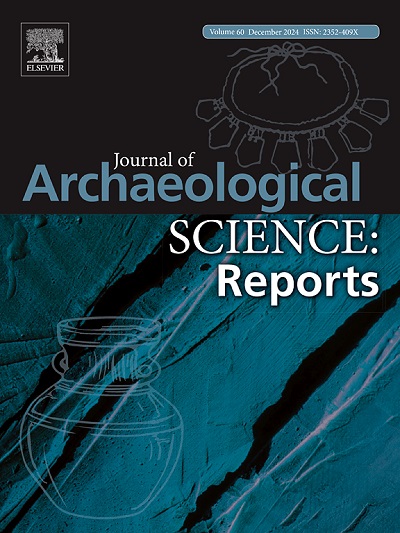Waterproof, hydraulic or natural hydraulic? – Characterization of a set of historic mortars from Paphos (Cyprus)
IF 1.5
2区 历史学
0 ARCHAEOLOGY
引用次数: 0
Abstract
Defining the hydraulic properties of historic lime mortars is a complicated task: chemical processes related to both the nature of the material and its degradation heavily influence the possibility of correctly assessing the existence and the extent of hydraulic components. Furthermore, terminological issues contribute to the confusion and uncertainty, with terms such as waterproof, hydraulic, natural hydraulic, natural cement, and watertight being used improperly, especially in the field of traditional archaeology. This paper aims at offering an interpretation of the hydraulicity degree in a set of historic mortars collected from the modern-day district of Paphos (Cyprus) through an interdisciplinary analytical approach. Eventually, determining the hydraulic character of a historic mortar is a matter of careful evaluation of multiscale data, starting with the interpretation of the context and ending with the characterization of the mixture components.
The samples collected from key archaeological sites near Paphos all pertained to water-related structures, although their hydraulic character could not be properly addressed; after the analytical procedure, we were able to categorize and define their physical and chemical properties in relation to their water containment function. At least two different types of renders for water-related structures were used in Paphos between the Late Bronze Age and the Roman time: one group consists of air lime binder with pozzolanic materials, while the second is a lime-based mixture with higher hydraulic properties.
防水的,液压的还是天然液压的?-描述一套来自帕福斯(塞浦路斯)的历史迫击炮
确定历史石灰砂浆的水力特性是一项复杂的任务:与材料性质及其降解有关的化学过程严重影响正确评估水力成分存在和程度的可能性。此外,术语问题也造成了混淆和不确定性,诸如防水、水力、天然水力、天然水泥和水密等术语使用不当,特别是在传统考古学领域。本文旨在通过跨学科的分析方法,对帕福斯(塞浦路斯)现代地区收集的一套历史砂浆的水力程度进行解释。最后,确定历史砂浆的水力特性是对多尺度数据进行仔细评估的问题,从对背景的解释开始,以混合物成分的表征结束。从帕福斯附近的主要考古遗址收集的样本都与水有关的结构有关,尽管它们的水力特性无法得到适当的解决;在分析程序之后,我们能够分类和定义它们的物理和化学性质,与它们的水遏制功能有关。在青铜时代晚期和罗马时代之间,帕福斯至少使用了两种不同类型的与水有关的结构渲染:一组由空气石灰粘合剂和火山灰材料组成,而第二组是石灰基混合物,具有更高的水力性能。
本文章由计算机程序翻译,如有差异,请以英文原文为准。
求助全文
约1分钟内获得全文
求助全文
来源期刊

Journal of Archaeological Science-Reports
ARCHAEOLOGY-
CiteScore
3.10
自引率
12.50%
发文量
405
期刊介绍:
Journal of Archaeological Science: Reports is aimed at archaeologists and scientists engaged with the application of scientific techniques and methodologies to all areas of archaeology. The journal focuses on the results of the application of scientific methods to archaeological problems and debates. It will provide a forum for reviews and scientific debate of issues in scientific archaeology and their impact in the wider subject. Journal of Archaeological Science: Reports will publish papers of excellent archaeological science, with regional or wider interest. This will include case studies, reviews and short papers where an established scientific technique sheds light on archaeological questions and debates.
 求助内容:
求助内容: 应助结果提醒方式:
应助结果提醒方式:


